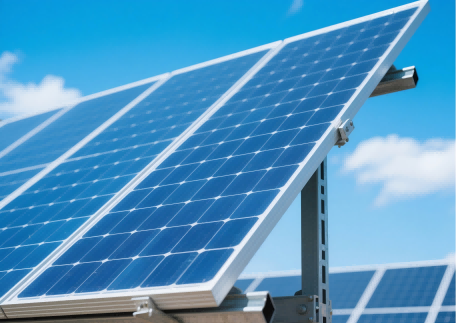Solid State Batteries & Solar Storage: Lifespan, Costs, and Buying Guide
This guide explores the groundbreaking solid-state battery technology and provides insights into the lifespan and cost of solar batteries for various applications.

1. What Is a Solid State Battery?
A solid state battery is a next-generation energy storage technology that replaces the liquid or gel electrolyte found in conventional lithium-ion batteries with a solid electrolyte. This small change in materials brings major benefits:
- Higher safety – Less risk of leakage, fire, or thermal runaway.
- Higher energy density – More energy in the same space.
- Faster charging – Potential for shorter charging times.
The main difference from a traditional lithium-ion battery is electrolyte type:
- Liquid battery → liquid electrolyte + separator.
- Solid state battery → solid electrolyte, eliminating the separator.
This means that as the technology matures, industries that currently depend on liquid electrolytes and separators may see long-term shifts in demand.
1.1 Solid State Battery Types
Solid electrolytes are generally classified into four categories:
- Polymer-based systems – Flexible shape and easy manufacturing, but low conductivity at room temperature.
- Oxide-based systems – Strong and stable, high conductivity at high temperatures, but poor electrode contact.
- Sulfide-based systems – High conductivity (close to liquids) and best potential performance, but very sensitive to moisture.
- Halide-based systems – Currently less common in large-scale applications.
Mainstream focus today: Sulfide-based solid state batteries, led by global EV and battery manufacturers.
1.2 Key Components
- Electrolyte – The medium for ion transfer.
- Cathode materials – Often high-nickel ternary for high capacity, with research on lithium-rich manganese-based for cost and sustainability.
- Anode materials – Silicon-carbon composites for current use, lithium metal for future high energy density.
- Current collectors – Maintain structure and electrical flow.
1.3 Why It Matters for You
For industries like EVs, renewable energy storage, and aerospace, solid state batteries offer a leap in performance and safety. If you’re looking for long lifespan, low-temperature operation, and compact energy storage, this is where the market is heading.
2. How Long Do Solar Batteries Last?
While solar panels can last 20–25 years, solar batteries—the part of the system that stores energy—usually have a shorter lifespan.
2.1 Average Lifespan by Battery Type
- Lithium-ion (LiFePO₄): 10–15 years
- Lead-acid: 3–5 years
- Cheap or low-quality batteries: Sometimes less than 2 years
2.2 Factors That Affect Lifespan
- Charge/discharge cycles – More cycles = faster degradation.
- Temperature – Heat and extreme cold can shorten life (unless designed for it).
- Depth of discharge – Fully draining batteries regularly reduces lifespan.
- Build quality – Poor materials and manufacturing speed up wear.
2.3 Tips to Extend Lifespan
- Keep batteries in a temperature-controlled space.
- Avoid deep discharges—try not to go below 20–30% charge.
- Choose high-quality brands with proven performance.
Example: Our Wiltson low-temperature lithium batteries can operate down to -50°C and still deliver strong performance—ideal for European and North American winters.
3. How Much Are Solar Batteries?
The price of a solar battery varies by capacity, chemistry, and brand.
3.1 Average Market Prices
| Capacity | Lithium-ion Price Range | Lead-acid Price Range |
|---|---|---|
| 5 kWh | $2,500 – $4,000 | $1,500 – $2,500 |
| 10 kWh | $4,500 – $8,000 | $2,500 – $4,500 |
| 15 kWh | $7,000 – $12,000 | $4,000 – $6,500 |
3.2 Cost Breakdown
- Battery unit – The core cost.
- Installation – Labour, mounting, wiring.
- Inverter/charger – Needed for energy conversion.
- Maintenance – Minimal for lithium, higher for lead-acid.
3.3 ROI and Long-Term Value
Lithium-ion batteries have higher upfront costs, but longer life means lower cost per year of service. They’re also more efficient, saving more on electricity bills.
Pro tip: For cold regions, a lithium battery designed for direct discharge at -50°C can avoid expensive heating systems.
4. Which Battery Should You Choose?
| Feature | Solid State | Lithium-ion (LiFePO₄) | Lead-acid |
|---|---|---|---|
| Lifespan | 15–20 yrs | 10–15 yrs | 3–5 yrs |
| Energy Density | ★★★★★ | ★★★★☆ | ★★☆☆☆ |
| Safety | ★★★★★ | ★★★★☆ | ★★★☆☆ |
| Cost | $$$$$ | $$$$ | $$ |
| Cold-Weather Use | Excellent | Good (if designed for it) | Poor |
Recommendation:
- Best for homeowners → Lithium-ion
- Best for extreme climates → Low-temperature lithium or future solid state
- Budget option → Lead-acid (short-term savings)
5. FAQs
Q: What’s the difference between solid state and lithium-ion batteries?
A: Solid state uses a solid electrolyte, improving safety and energy density, while lithium-ion uses liquid/gel electrolytes.
Q: Can I use solid state batteries for solar storage?
A: Yes, but commercial products are still emerging. For now, lithium-ion is the most practical.
Q: Are solar batteries worth it?
A: Yes, if you want backup power, better use of solar energy, and protection against grid outages.
Q: How do I maintain my solar battery?
A: Keep it cool, avoid deep discharges, and choose high-quality products.
6. Conclusion
Solid state batteries are the future of energy storage, offering better safety, lifespan, and performance. For now, lithium-ion solar batteries remain the most cost-effective choice for residential and commercial projects—especially in extreme weather.
If you need custom lithium batteries that can perform reliably in -50°C winters or last over a decade, we can help.
Contact Wiltson Energy today for a free quote.

